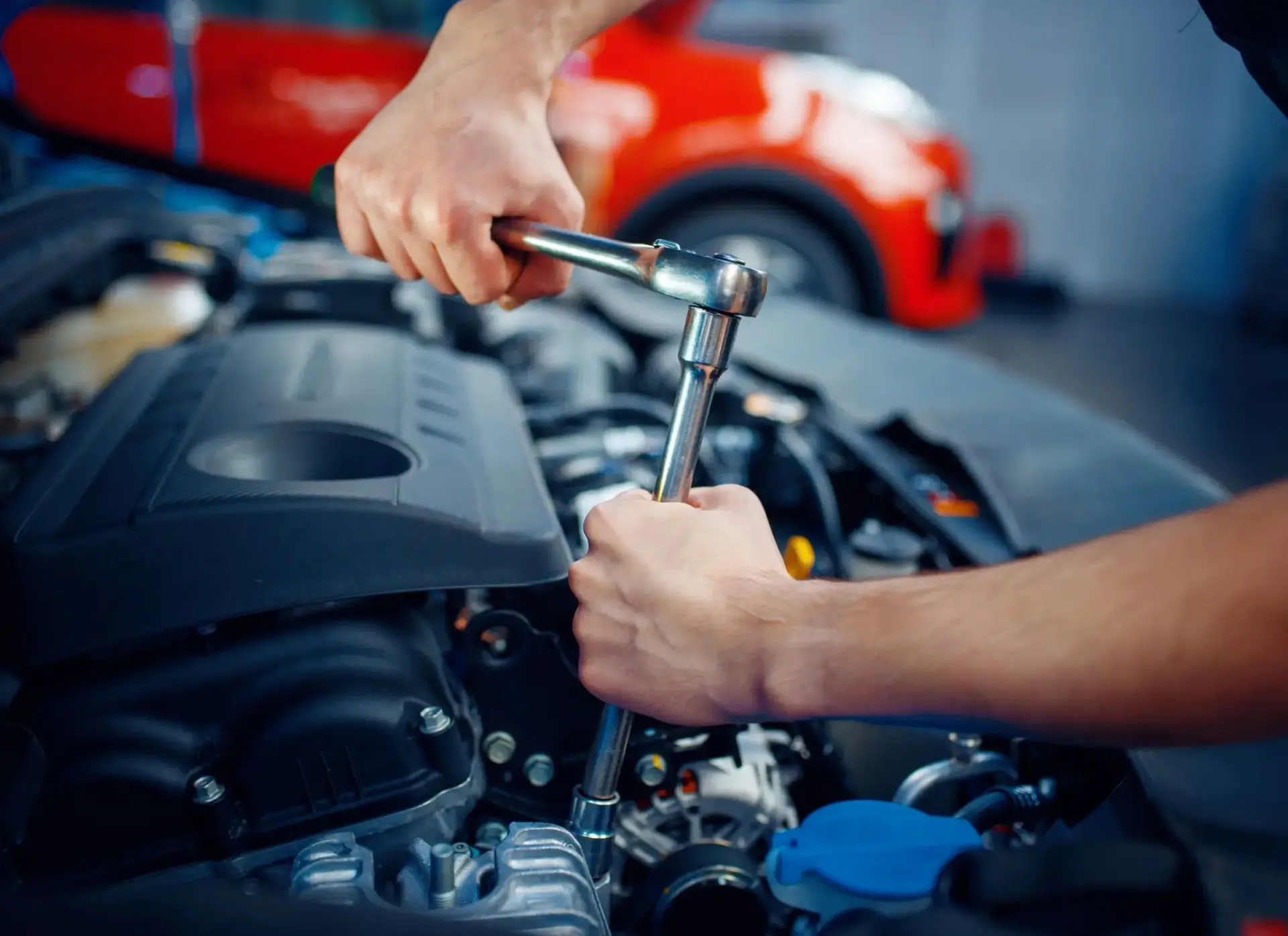
Daily car maintenance isn't just about preventing costly problems—it's a smart investment strategy that saves money, enhances your safety on the road, and protects your vehicle's long-term value. With average repair costs ranging from $500 to $1,500 per incident, spending just a few minutes each day on preventive care can save you thousands in unexpected expenses.
Modern vehicles are incredibly sophisticated machines, but they reward consistent attention with improved performance and longevity. Studies show that well-maintained vehicles retain up to 55% more resale value than neglected ones, while also delivering up to 10% better fuel efficiency. The best part? These benefits come from simple habits that take just 5-10 minutes each morning.
In this comprehensive guide, we'll walk you through practical, expert-backed strategies that you can start implementing immediately to extend your vehicle's life and maximize your automotive investment.
Why Daily Car Maintenance Matters More Than Ever
Think of your car like your health—small daily habits prevent major problems down the road. Modern vehicles contain over 30,000 individual components working together, and even minor neglect can create a domino effect leading to expensive repairs. The difference between a $20 fluid top-off and a $2,000 engine replacement often comes down to catching problems early.
Consider this: proper tire pressure alone can improve your fuel economy by up to 40% while preventing dangerous blowouts. Regular fluid checks catch 80% of major mechanical failures before they happen. These aren't just statistics—they represent real money staying in your pocket and real peace of mind on the road.
Daily maintenance also transforms your relationship with your vehicle. Instead of dreading unexpected breakdowns and surprise repair bills, you become proactive and confident. You'll notice small changes before they become big problems, making you a smarter car owner and saving you from the stress of roadside emergencies.
"All car maintenance is necessary to ensure the longevity of your vehicle. Regularly doing these small maintenance tasks that are easily done at home can be the difference between owning a vehicle for a few years compared to a few decades," explains Andrew James, Luxury Automotive Technician.
The Complete Daily Car Maintenance Routine
The secret to sustainable daily maintenance is making it effortless. These five essential checks take just minutes but provide maximum protection for your investment. Start with one area and gradually build the full routine over a few weeks.
Morning Fluid Check: Your Car's Vital Signs
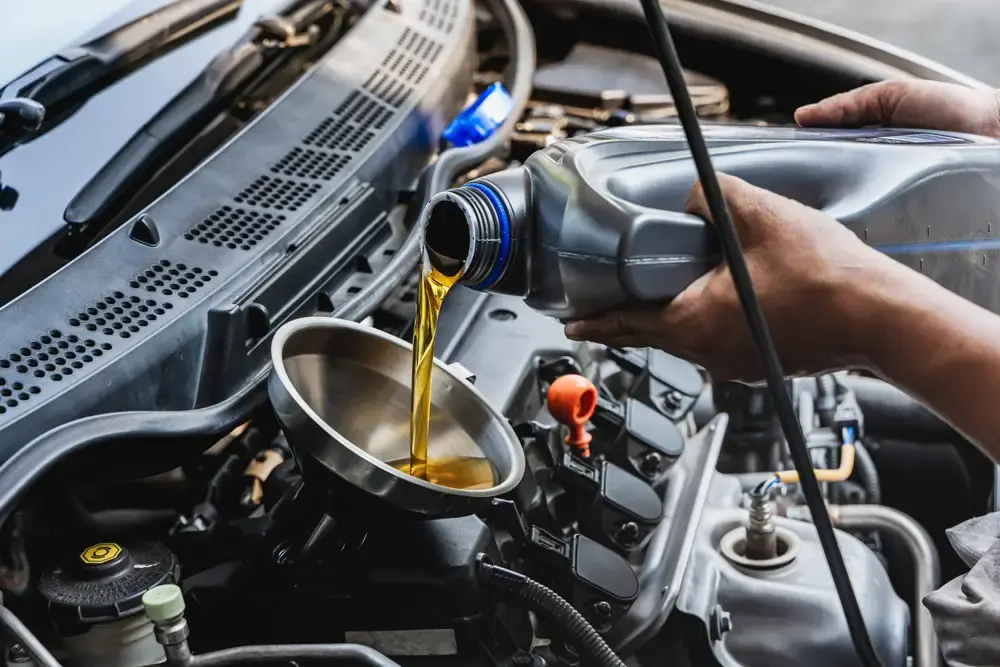
Just like your body needs proper hydration to function, your car relies on five critical fluids to operate safely and efficiently. A quick glance at fluid levels each morning can prevent catastrophic engine damage, brake failure, or overheating incidents.
Start with your engine oil using the dipstick—the fluid should appear amber to black, never milky or foamy. Professional technician Andrew James recommends a more conservative approach to oil changes: "In my professional opinion many automotive manufacturers over promise the longevity of common maintenance items like fluids and rubber components. I change the engine oil on my personal vehicles at 3,000-4,000 mile intervals. Although this seems excessive considering many manufacturers today recommend 10,000 miles or more, keeping in mind the extreme tolerances inside modern drivetrain components, adequate lubrication is key. By far the easiest and best thing you can do for any engine is regular and frequent oil changes." For comprehensive maintenance schedules, always consult your vehicle's owner manual or visit the National Highway Traffic Safety Administration for official safety guidelines.
Check your coolant reservoir when the engine is cold; the level should sit between the minimum and maximum marks. Your brake fluid reservoir should contain clear, not dark or contaminated fluid. Don't forget your windshield washer fluid, especially during the winter months when visibility is crucial.
Power steering fluid matters too if your vehicle has hydraulic steering. Low levels create strain on the system and can lead to expensive pump replacements. The entire fluid check takes less than two minutes and can prevent thousands in repair costs.
Tire Safety: Your Connection to the Road
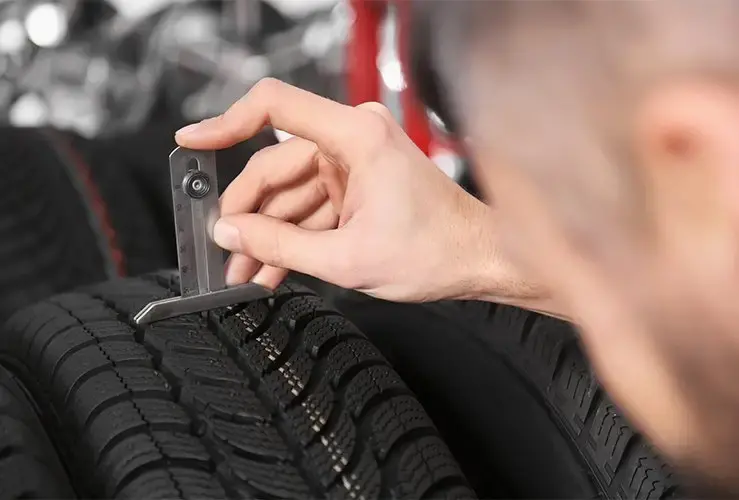
Your tires are literally where the rubber meets the road, making them critical for safety and performance. Under-inflated tires reduce fuel economy by 3% for every PSI below optimal pressure and increase your risk of dangerous blowouts by 300%. Proper tire care saves money on both fuel and premature replacements. Understanding tire specifications and performance ratings becomes even more crucial for modified vehicles.
While you don't need to check pressure daily, a quick visual inspection reveals obvious problems. Look for uneven wear patterns that indicate alignment issues, spot cracks or bulges that suggest internal damage, and remove any debris lodged in the tread. Once weekly, use a quality tire pressure gauge to ensure proper inflation according to your vehicle's specifications.
Pay attention to how your car feels while driving. Vibrations, pulling to one side, or changes in handling often indicate tire or alignment problems that need professional attention before they cause additional damage. Nate from RepairWise emphasizes the interconnected nature of tire maintenance: "Tire pressure checks and tire rotations help keep your suspension aligned and maintain even tire wear. Additionally, it helps reduce strain on drivetrain components, such as the transfer case and suspension. This can cause excessive wear on the transmission if tire health is not maintained."
Exterior Care and Lighting Systems
A clean exterior isn't just about appearance—it's about protection. Road salt, tree sap, and accumulated dirt create chemical reactions that lead to rust and paint damage over time. A quick daily wipe-down with a microfiber cloth removes harmful debris and preserves your vehicle's finish and value.
Lighting systems require daily attention for both safety and legal compliance. Test your headlights, taillights, turn signals, and hazard lights regularly. Clean your mirrors and windows for maximum visibility, especially during challenging weather conditions. Don't overlook your license plate—it needs to be clean and properly illuminated to avoid traffic violations.
This exterior care routine takes just three minutes but protects thousands of dollars in paint and bodywork while ensuring you remain visible and safe on the road.
Dashboard Monitoring: Your Car's Communication System
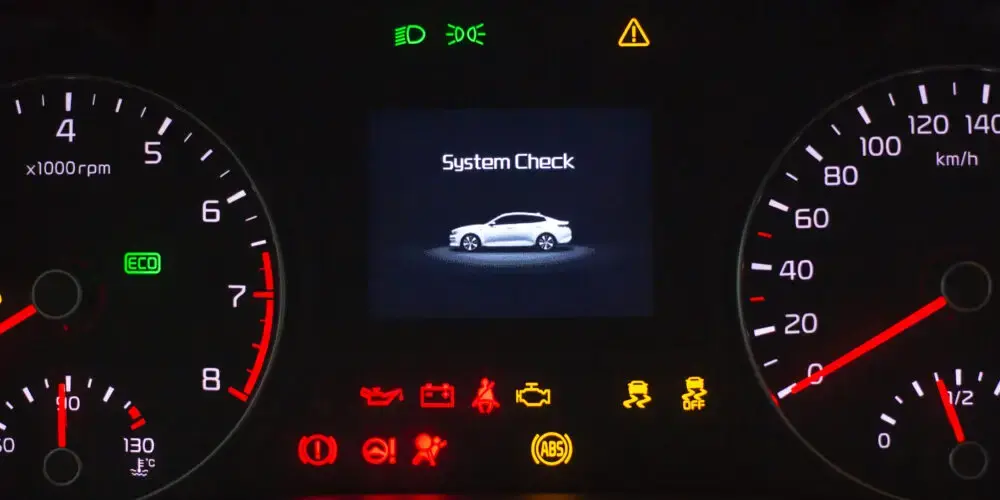
Your dashboard serves as your vehicle's primary communication tool, providing real-time information about critical systems. Ignoring warning lights increases average repair costs by 400% because small problems evolve into major failures when left unaddressed.
During your morning start-up sequence, watch for warning lights and note the normal positions of your temperature, oil pressure, and fuel gauges. Any deviation from normal patterns deserves immediate attention. The check engine light, oil pressure warnings, and temperature alerts should never be ignored, even if the car seems to run fine.
Modern vehicles also provide valuable information through digital displays. Pay attention to fuel economy readings, maintenance reminders, and system status updates. These early warning systems can save you from expensive repairs and dangerous breakdowns.
Sensory Awareness: Using Your Natural Diagnostic Tools
Your senses are incredibly powerful diagnostic tools that often detect problems weeks before they become serious failures. Unusual sounds, vibrations, or performance changes provide early warnings that can save thousands in repair costs.
Listen for grinding noises that might indicate brake problems, squealing sounds that suggest belt issues, or rattling that could mean loose components. Feel for unusual vibrations in the steering wheel, seat, or pedals that might indicate alignment, balance, or suspension problems.
Notice changes in acceleration, braking response, or handling characteristics. These subtle differences often indicate developing problems that are much less expensive to address early. A quick visual inspection under your vehicle can also reveal fluid leaks or hanging components that need immediate attention.
"The typical maintenance schedule for a car depends greatly on the make/model/trim of the vehicle. Different drivetrain options will call for different intervals of maintenance. Your car's owner's manual will always give you maintenance recommendations and intervals. However, keep in mind many of these manufacturer intervals can be over-promised," advises Andrew James, Luxury Automotive Technician.
Smart Driving Habits That Save Money
The way you drive has an enormous impact on your vehicle's longevity and maintenance costs. Small changes in driving technique can reduce wear by 25-50% while improving fuel efficiency and extending component life.
Gentle Operation Techniques
Smooth, gradual acceleration reduces stress on your transmission, engine, and drivetrain components. Instead of rapid acceleration from stops, build speed progressively to reduce wear and improve fuel economy. This gentle approach can extend transmission life by decades while saving hundreds of dollars annually in fuel costs.
Progressive braking techniques are equally important for reducing maintenance costs. Begin braking earlier and apply pressure gradually rather than waiting until the last moment. As Nate from RepairWise explains: "Smooth braking is crucial for brake life, but [aggressive braking] also leads to faster wear on the tires and brakes, as well as increased issues with the suspension." This approach can extend brake pad life by up to 50% and reduces stress on your entire braking system while protecting multiple vehicle components. For those interested in performance brake upgrades, understanding proper braking technique becomes even more critical.
While modern engines don't need extended warm-up periods, professional technician Nate from RepairWise advises: "Don't push your car to its maximum capacity when it's cold outside without letting it warm up first. Need to let it ease in and acclimate." This means avoiding hard acceleration or high RPMs immediately after starting in cold weather, while still minimizing unnecessary idling to reduce engine hour accumulation and fuel consumption.
Environmental Protection Strategies
Where and how you park significantly affects your vehicle's condition over time. Shade parking protects your interior from UV damage while reducing the load on your air conditioning system. Speaking of air conditioning, Nate from RepairWise warns: "Don't turn recirculation on your AC unless it is crucial to protect air quality. Leaving it on can most likely lead to condensation buildup, which will cause musty smells and potentially even mold." Covered storage shields paint and rubber components from weather extremes that accelerate aging and deterioration.
Avoid parking too close to curbs to prevent wheel and tire damage from accidental contact. Dodge road debris and potholes when safely possible to protect your suspension components and undercarriage from damage. Nate from RepairWise specifically advises: "Be very cautious of speed bumps, potholes, and rough roads, as they lead to increased suspension wear and tear. Worse roads lead to more suspension troubles." Additionally, be mindful of your vehicle's load capacity - "Carrying extra-heavy loads in the car for extended periods can put a significant strain on the differential and suspension components, leading to accelerated wear or potentially costly damage. This is particularly true for individuals who often drive SUVs and pickup trucks."
Strategic DIY Maintenance
Learning to perform simple maintenance tasks yourself creates substantial savings over time. "Car maintenance can absolutely be a DIY project. Many essential parts of car maintenance are quite simple to do and require very few tools or parts. Learning to work on your own car can be very rewarding and is a great way to save money while learning something useful," notes Andrew James, Luxury Automotive Technician. This is especially true for enthusiasts interested in vehicle upgrades and modifications, where hands-on experience becomes invaluable. For additional DIY guidance, resources like Popular Mechanics offer step-by-step tutorials for common maintenance tasks. Replacing air filters yourself costs about $15 compared to $45 or more at a service center. Wiper blade changes take five minutes and cost $20 versus $60 for professional installation.
Bulb replacements, cabin air filter changes, and basic fluid top-offs are simple tasks that provide significant savings when performed yourself. These DIY activities also help you become more familiar with your vehicle's systems and needs.
Essential Tools for Effortless Maintenance
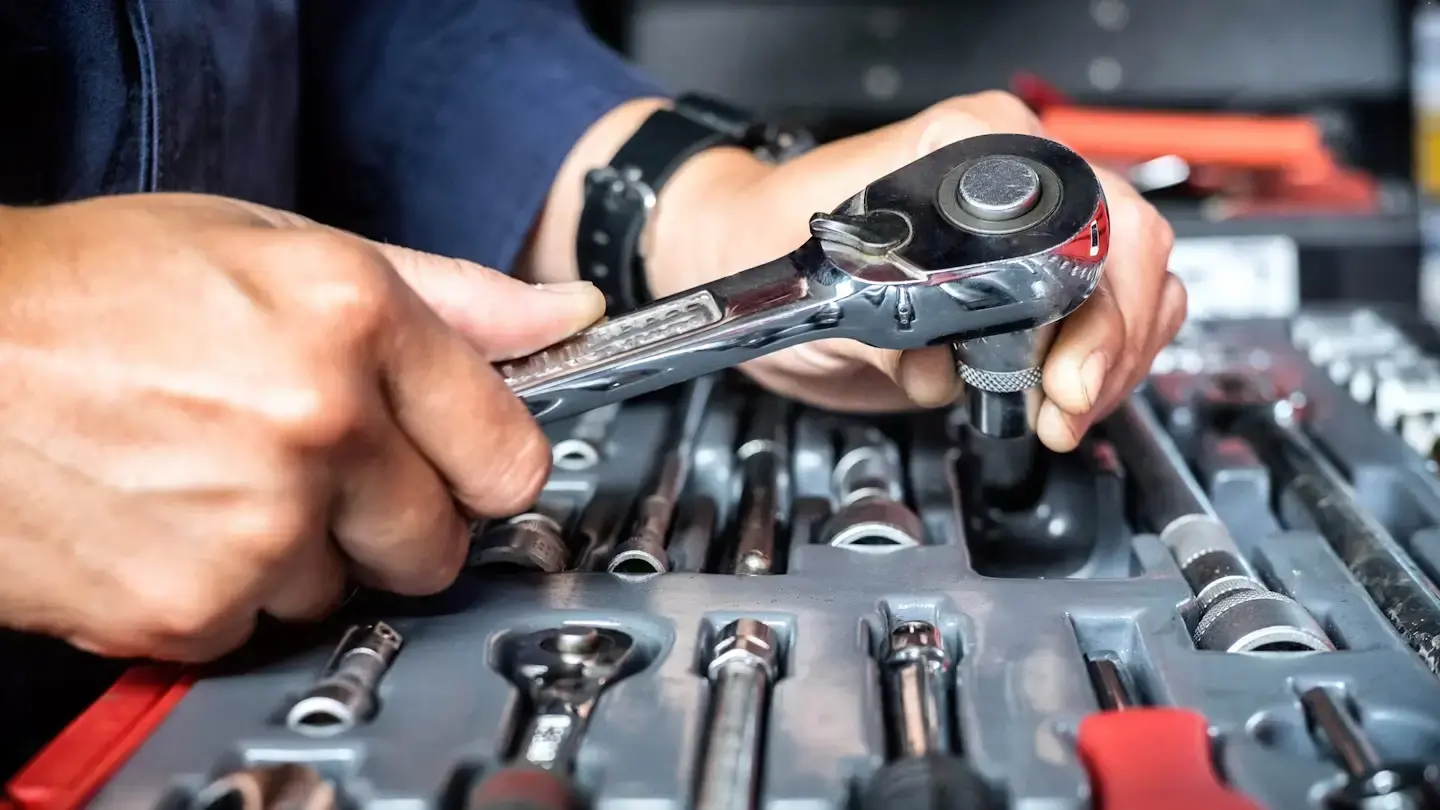
The right tools transform daily maintenance from a chore into a quick, efficient routine. These affordable essentials pay for themselves within months by enabling you to catch problems early and perform simple tasks yourself.
Basic Measurement Tools
A quality digital tire pressure gauge provides accuracy within 0.5 PSI and costs just $15-25. This single tool can improve your fuel economy and prevent dangerous blowouts while extending tire life significantly. Pair it with a basic tread depth gauge for complete tire monitoring.
An oil dipstick funnel set simplifies fluid additions and checks while preventing messy spills that can damage paint or create environmental hazards. A reliable LED flashlight illuminates engine bay components and undercarriage areas for thorough inspections.
Cleaning and Care Supplies
Microfiber cloths provide scratch-free cleaning for all surfaces while effectively removing dirt and debris that can cause long-term damage. All-purpose automotive cleaners safely clean paint, glass, and plastic without harsh chemicals that might cause deterioration.
Glass cleaning wipes ensure streak-free visibility enhancement, while detailing brushes help you reach tight spaces and crevices where dirt and debris accumulate.
Digital Organization
Maintenance tracking apps like MyCarfax, Car Minder, or aCar help you log service records and set reminders for recurring tasks. Your smartphone camera provides excellent documentation capabilities for before-and-after comparisons of wear patterns and potential problems. For those interested in the latest automotive innovations, staying updated with cutting-edge car technology can help you understand how modern systems work together to maintain optimal performance. Professional diagnostic tools and resources from manufacturers like Bosch continue advancing automotive maintenance capabilities.
Expensive Mistakes to Avoid
Understanding common maintenance mistakes can save you thousands in unnecessary repairs and help you make informed decisions about your vehicle's care.
The Cost of Neglect
Ignoring warning lights represents the most expensive mistake car owners make. A $50 sensor replacement becomes a $2,000 engine rebuild when ignored too long. Low fluid levels cause similar escalation—insufficient oil leads to engine seizure and complete replacement costs exceeding $5,000.
Tire pressure neglect creates multiple problems simultaneously. Under-inflated tires reduce fuel economy, increase blowout risk, and cause premature tire failure that requires expensive emergency replacements.
Product and Timing Errors
Using incorrect fluids or parts creates expensive problems that appear months or years later. Wrong oil viscosity damages engine seals and components, while incompatible coolants create corrosive chemical reactions that destroy cooling systems.
Cheap part substitution often costs more in the long run as inferior components fail prematurely and can damage related systems. Quality parts and fluids represent insurance against much more expensive failures.
Timing mistakes are equally costly. Procrastinating maintenance allows small problems to compound into major failures, while over-servicing wastes money without providing benefits. Following manufacturer recommendations and staying alert to your vehicle's needs creates the optimal balance.
Building Your Sustainable Maintenance Routine
Success with daily car maintenance comes from building sustainable habits rather than trying to do everything perfectly from day one. Start small and gradually expand your routine as each element becomes automatic.
During your first two weeks, focus on just one daily check—either fluids or tires. Set smartphone reminders to build consistency and document baseline conditions with photos for future reference. This foundation approach prevents overwhelm while establishing the habit pattern.
In weeks three and four, expand to include lighting and dashboard monitoring. Begin tracking fuel efficiency changes to see the tangible benefits of your efforts. Create a weekly schedule for more thorough inspections that complement your daily routine.
After the first month, integrate seasonal maintenance planning and establish relationships with trusted service providers for tasks beyond your skill level. Calculate and celebrate the cost savings you've achieved to maintain motivation for continued success.
Your Investment in Automotive Excellence
Daily car maintenance represents the most powerful investment you can make in your vehicle's future. These simple, expert-recommended practices require just minutes each day but deliver thousands in savings, enhanced safety, and peace of mind throughout your ownership experience.
The compound effect of consistent daily attention transforms routine maintenance from a burden into a wealth-building habit. Your vehicle responds to care with improved performance, reliability, and longevity that pays dividends for years. Well-maintained vehicles not only cost less to operate but also provide superior safety and comfort for you and your passengers.
Remember that every minute invested in prevention saves hours dealing with breakdowns and thousands in repair costs. Start with just one daily check tomorrow, and build momentum gradually. Your commitment to consistent vehicle care will reward you with years of reliable transportation and significant financial savings.
The choice is yours: spend a few minutes each day on prevention, or spend thousands later on repairs. Choose wisely, and transform your relationship with car ownership starting today.
For more automotive insights, expert reviews, and car culture content, visit Modified Rides - your trusted source for everything automotive.